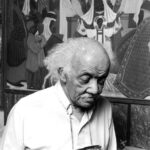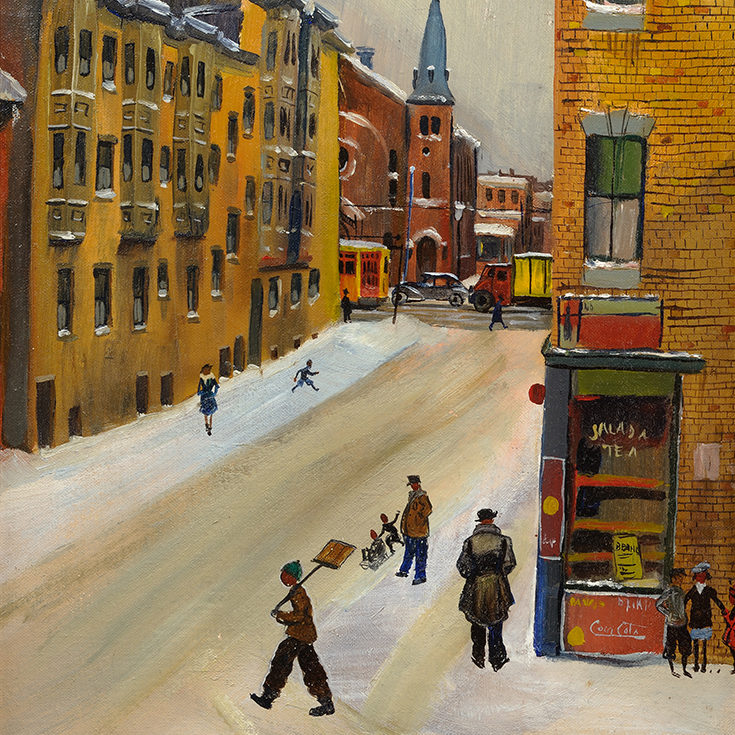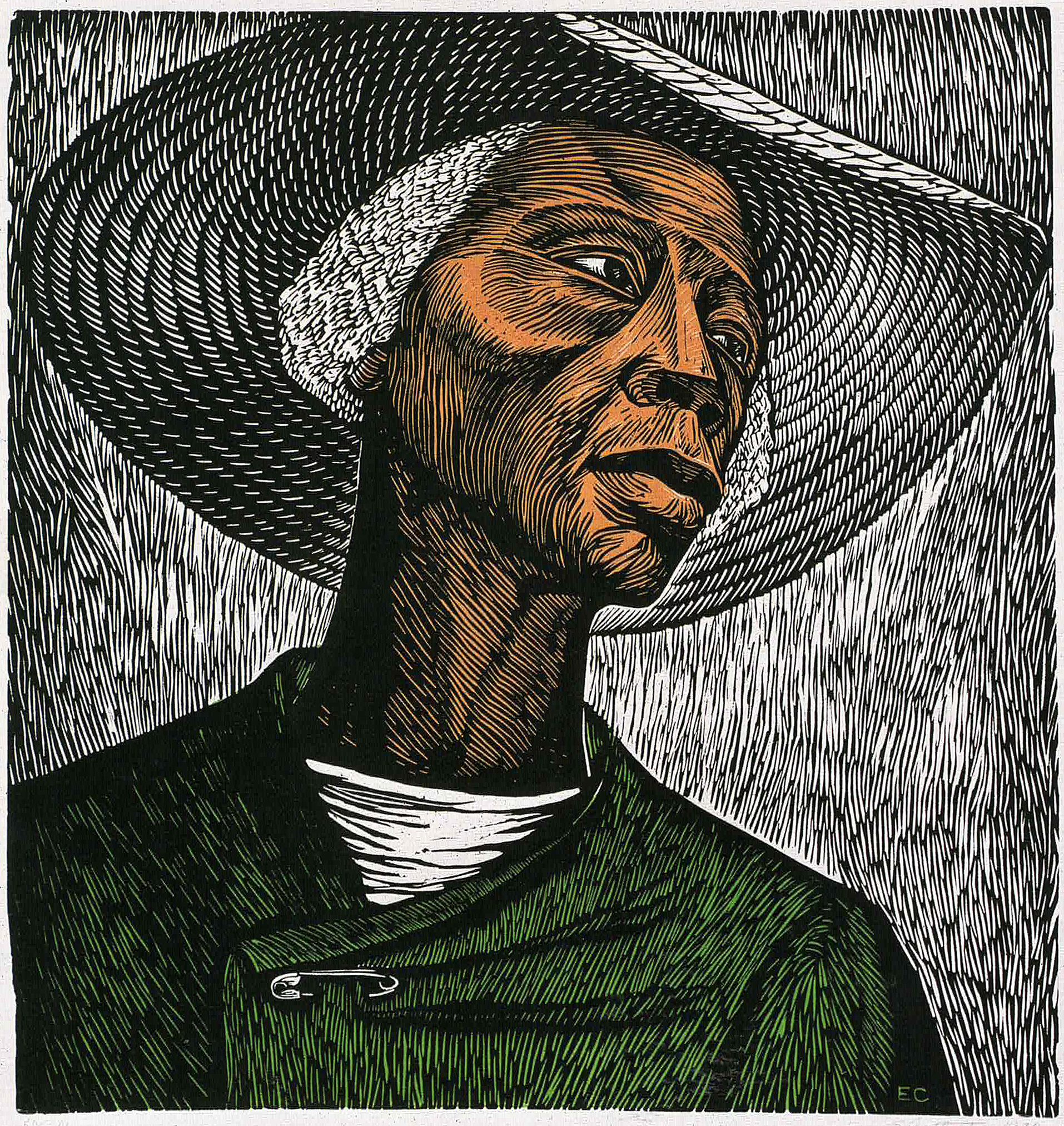 Allan Rohan Crite was born in New Jersey and moved with his family to Boston as an infant. His interest in art was encouraged at an early age. He graduated from English High School in 1929 and the School of the Museum of Fine Arts, Boston in 1936. Crite was one of the first artists to observe and depict average African Americans engaged in their daily activities, primarily in the South End, Cambridge and Roxbury neighborhoods of Boston. According to Crite, “I’ve only done one piece of work in my whole life..I wanted to paint people of color as normal humans. I tell the story of man through the black figure.” Crite rejected the images of artists like Archibald Motley, Jr. and Palmer Hayden because he felt they were inaccurate in their portrayal of African American life–at least, in that those images were universal symbols. He earned the title of “reporter-artist”, rendering his subjects and scenery with such fine detail they appear almost like color photographs.
Allan Rohan Crite was born in New Jersey and moved with his family to Boston as an infant. His interest in art was encouraged at an early age. He graduated from English High School in 1929 and the School of the Museum of Fine Arts, Boston in 1936. Crite was one of the first artists to observe and depict average African Americans engaged in their daily activities, primarily in the South End, Cambridge and Roxbury neighborhoods of Boston. According to Crite, “I’ve only done one piece of work in my whole life..I wanted to paint people of color as normal humans. I tell the story of man through the black figure.” Crite rejected the images of artists like Archibald Motley, Jr. and Palmer Hayden because he felt they were inaccurate in their portrayal of African American life–at least, in that those images were universal symbols. He earned the title of “reporter-artist”, rendering his subjects and scenery with such fine detail they appear almost like color photographs.
A devout Episcopalian, his work soon began to exhibit strong religious themes as well, depicting blacks in interpretations of Biblical stories and African American spirituals. Crite also wrote and illustrated several books, created hand-tooled brass panels that once adorned a monastery, and designed and painted vestments and banners for St. Stephen’s Episcopal Church in Cambridge. His illustrations were published for many years in the 1970s and 80s as covers for Sunday service leaflets.
Crite’s work is exhibited at the National Museum of African American History and Culture, Washington D.C.; Museum of Modern Art, NY; Museum of Fine Arts, Boston; and the Art Institute of Chicago.




